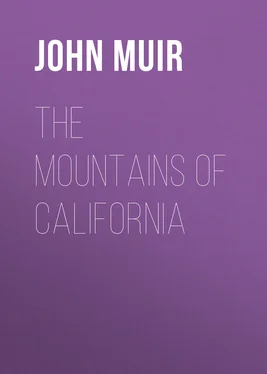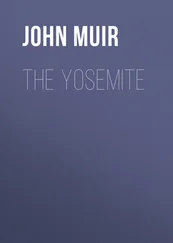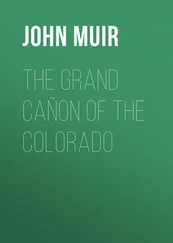John Muir - The Mountains of California
Здесь есть возможность читать онлайн «John Muir - The Mountains of California» — ознакомительный отрывок электронной книги совершенно бесплатно, а после прочтения отрывка купить полную версию. В некоторых случаях можно слушать аудио, скачать через торрент в формате fb2 и присутствует краткое содержание. Жанр: Путешествия и география, История, foreign_edu, foreign_antique, foreign_prose, на английском языке. Описание произведения, (предисловие) а так же отзывы посетителей доступны на портале библиотеки ЛибКат.
- Название:The Mountains of California
- Автор:
- Жанр:
- Год:неизвестен
- ISBN:нет данных
- Рейтинг книги:4 / 5. Голосов: 1
-
Избранное:Добавить в избранное
- Отзывы:
-
Ваша оценка:
- 80
- 1
- 2
- 3
- 4
- 5
The Mountains of California: краткое содержание, описание и аннотация
Предлагаем к чтению аннотацию, описание, краткое содержание или предисловие (зависит от того, что написал сам автор книги «The Mountains of California»). Если вы не нашли необходимую информацию о книге — напишите в комментариях, мы постараемся отыскать её.
The Mountains of California — читать онлайн ознакомительный отрывок
Ниже представлен текст книги, разбитый по страницам. Система сохранения места последней прочитанной страницы, позволяет с удобством читать онлайн бесплатно книгу «The Mountains of California», без необходимости каждый раз заново искать на чём Вы остановились. Поставьте закладку, и сможете в любой момент перейти на страницу, на которой закончили чтение.
Интервал:
Закладка:
John Muir
The Mountains of California
CHAPTER I
THE SIERRA NEVADA
Go where you may within the bounds of California, mountains are ever in sight, charming and glorifying every landscape. Yet so simple and massive is the topography of the State in general views, that the main central portion displays only one valley, and two chains of mountains which seem almost perfectly regular in trend and height: the Coast Range on the west side, the Sierra Nevada on the east. These two ranges coming together in curves on the north and south inclose a magnificent basin, with a level floor more than 400 miles long, and from 35 to 60 miles wide. This is the grand Central Valley of California, the waters of which have only one outlet to the sea through the Golden Gate. But with this general simplicity of features there is great complexity of hidden detail. The Coast Range, rising as a grand green barrier against the ocean, from 2000 to 8000 feet high, is composed of innumerable forest-crowned spurs, ridges, and rolling hill-waves which inclose a multitude of smaller valleys; some looking out through long, forest-lined vistas to the sea; others, with but few trees, to the Central Valley; while a thousand others yet smaller are embosomed and concealed in mild, round-browed hills, each, with its own climate, soil, and productions.
Making your way through the mazes of the Coast Range to the summit of any of the inner peaks or passes opposite San Francisco, in the clear springtime, the grandest and most telling of all California landscapes is outspread before you. At your feet lies the great Central Valley glowing golden in the sunshine, extending north and south farther than the eye can reach, one smooth, flowery, lake-like bed of fertile soil. Along its eastern margin rises the mighty Sierra, miles in height, reposing like a smooth, cumulous cloud in the sunny sky, and so gloriously colored, and so luminous, it seems to be not clothed with light, but wholly composed of it, like the wall of some celestial city. Along the top, and extending a good way down, you see a pale, pearl-gray belt of snow; and below it a belt of blue and dark purple, marking the extension of the forests; and along the base of the range a broad belt of rose-purple and yellow, where lie the minor's gold-fields and the foot-hill gardens. All these colored belts blending smoothly make a wall of light ineffably fine, and as beautiful as a rainbow, yet firm as adamant.
When I first enjoyed this superb view, one glowing April day, from the summit of the Pacheco Pass, the Central Valley, but little trampled or plowed as yet, was one furred, rich sheet of golden compositae, and the luminous wall of the mountains shone in all its glory. Then it seemed to me the Sierra should be called not the Nevada, or Snowy Range, but the Range of Light. And after ten years spent in the heart of it, rejoicing and wondering, bathing in its glorious floods of light, seeing the sunbursts of morning among the icy peaks, the noonday radiance on the trees and rocks and snow, the flush of the alpenglow, and a thousand dashing waterfalls with their marvelous abundance of irised spray, it still seems to me above all others the Range of Light, the most divinely beautiful of all the mountain-chains I have ever seen.
The Sierra is about 500 miles long, 70 miles wide, and from 7000 to nearly 15,000 feet high. In general views no mark of man is visible on it, nor anything to suggest the richness of the life it cherishes, or the depth and grandeur of its sculpture. None of its magnificent forest-crowned ridges rises much above the general level to publish its wealth. No great valley or lake is seen, or river, or group of well-marked features of any kind, standing out in distinct pictures. Even the summit-peaks, so clear and high in the sky, seem comparatively smooth and featureless. Nevertheless, glaciers are still at work in the shadows of the peaks, and thousands of lakes and meadows shine and bloom beneath them, and the whole range is furrowed with cañons to a depth of from 2000 to 5000 feet, in which once flowed majestic glaciers, and in which now flow and sing a band of beautiful rivers.
Though of such stupendous depth, these famous cañons are not raw, gloomy, jagged-walled gorges, savage and inaccessible. With rough passages here and there they still make delightful pathways for the mountaineer, conducting from the fertile lowlands to the highest icy fountains, as a kind of mountain streets full of charming life and light, graded and sculptured by the ancient glaciers, and presenting, throughout all their courses, a rich variety of novel and attractive scenery, the most attractive that has yet been discovered in the mountain-ranges of the world.
In many places, especially in the middle region of the western flank of the range, the main cañons widen into spacious valleys or parks, diversified like artificial landscape-gardens, with charming groves and meadows, and thickets of blooming bushes, while the lofty, retiring walls, infinitely varied in form and sculpture, are fringed with ferns, flowering-plants of many species, oaks, and evergreens, which find anchorage on a thousand narrow steps and benches; while the whole is enlivened and made glorious with rejoicing streams that come dancing and foaming over the sunny brows of the cliffs to join the shining river that flows in tranquil beauty down the middle of each one of them.
The walls of these park valleys of the Yosemite kind are made up of rocks mountains in size, partly separated from each other by narrow gorges and side-cañons; and they are so sheer in front, and so compactly built together on a level floor, that, comprehensively seen, the parks they inclose look like immense halls or temples lighted from above. Every rock seems to glow with life. Some lean back in majestic repose; others, absolutely sheer, or nearly so, for thousands of feet, advance their brows in thoughtful attitudes beyond their companions, giving welcome to storms and calms alike, seemingly conscious yet heedless of everything going on about them, awful in stern majesty, types of permanence, yet associated with beauty of the frailest and most fleeting forms; their feet set in pine-groves and gay emerald meadows, their brows in the sky; bathed in light, bathed in floods of singing water, while snow-clouds, avalanches, and the winds shine and surge and wreathe about them as the years go by, as if into these mountain mansions Nature had taken pains to gather her choicest treasures to draw her lovers into close and confiding communion with her.
Here, too, in the middle region of deepest cañons are the grandest forest-trees, the Sequoia, king of conifers, the noble Sugar and Yellow Pines, Douglas Spruce, Libocedrus, and the Silver Firs, each a giant of its kind, assembled together in one and the same forest, surpassing all other coniferous forests in the world, both in the number of its species and in the size and beauty of its trees. The winds flow in melody through their colossal spires, and they are vocal everywhere with the songs of birds and running water. Miles of fragrant ceanothus and manzanita bushes bloom beneath them, and lily gardens and meadows, and damp, ferny glens in endless variety of fragrance and color, compelling the admiration of every observer. Sweeping on over ridge and valley, these noble trees extend a continuous belt from end to end of the range, only slightly interrupted by sheer-walled cañons at intervals of about fifteen and twenty miles. Here the great burly brown bears delight to roam, harmonizing with the brown boles of the trees beneath which they feed. Deer, also, dwell here, and find food and shelter in the ceanothus tangles, with a multitude of smaller people. Above this region of giants, the trees grow smaller until the utmost limit of the timber line is reached on the stormy mountain-slopes at a height of from ten to twelve thousand feet above the sea, where the Dwarf Pine is so lowly and hard beset by storms and heavy snow, it is pressed into flat tangles, over the tops of which we may easily walk. Below the main forest belt the trees likewise diminish in size, frost and burning drought repressing and blasting alike.
Читать дальшеИнтервал:
Закладка:
Похожие книги на «The Mountains of California»
Представляем Вашему вниманию похожие книги на «The Mountains of California» списком для выбора. Мы отобрали схожую по названию и смыслу литературу в надежде предоставить читателям больше вариантов отыскать новые, интересные, ещё непрочитанные произведения.
Обсуждение, отзывы о книге «The Mountains of California» и просто собственные мнения читателей. Оставьте ваши комментарии, напишите, что Вы думаете о произведении, его смысле или главных героях. Укажите что конкретно понравилось, а что нет, и почему Вы так считаете.












